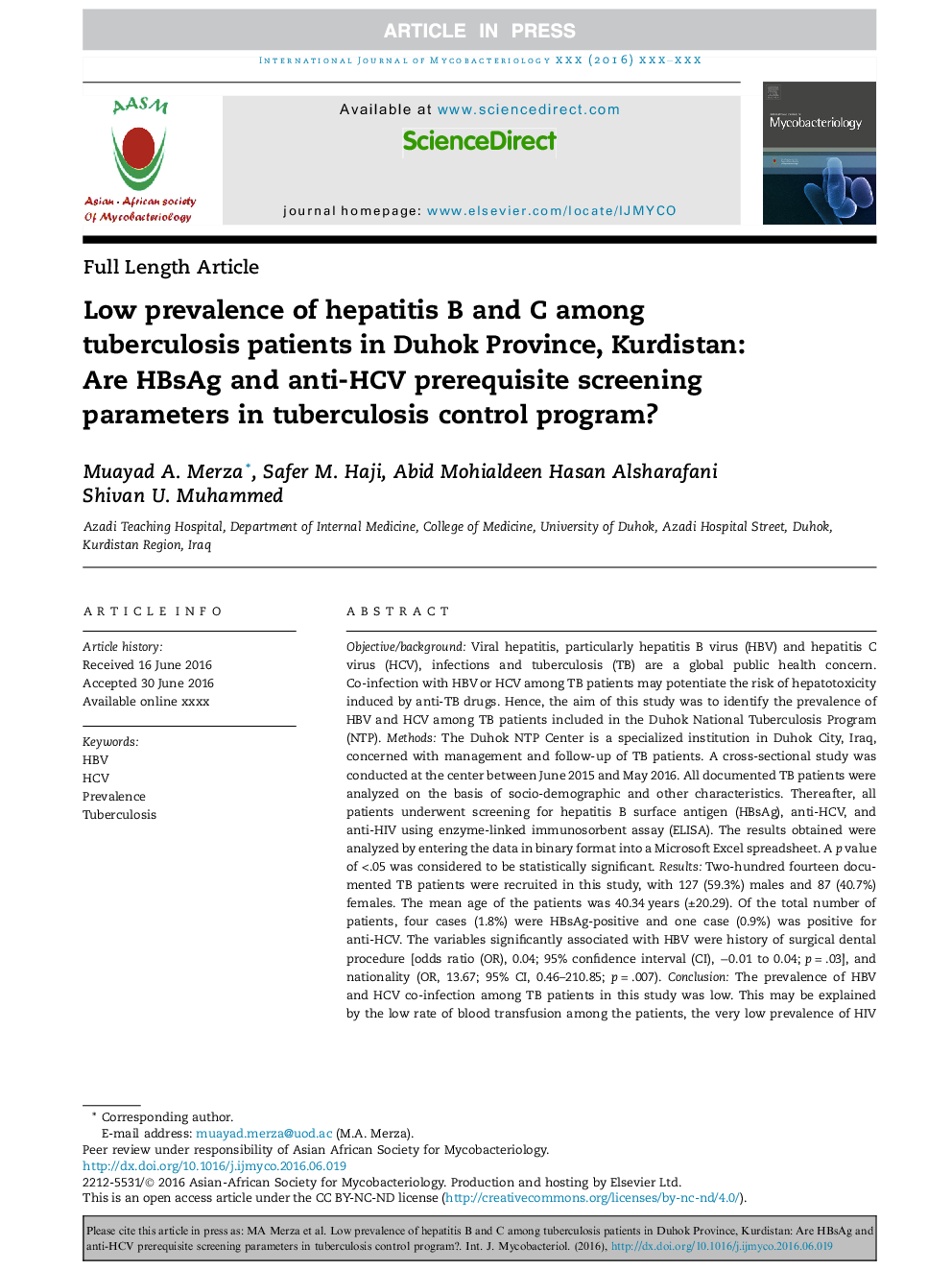| Article ID | Journal | Published Year | Pages | File Type |
|---|---|---|---|---|
| 5672657 | International Journal of Mycobacteriology | 2016 | 5 Pages |
Abstract
Objective/background: Viral hepatitis, particularly hepatitis B virus (HBV) and hepatitis C virus (HCV), infections and tuberculosis (TB) are a global public health concern. Co-infection with HBV or HCV among TB patients may potentiate the risk of hepatotoxicity induced by anti-TB drugs. Hence, the aim of this study was to identify the prevalence of HBV and HCV among TB patients included in the Duhok National Tuberculosis Program (NTP). Methods: The Duhok NTP Center is a specialized institution in Duhok City, Iraq, concerned with management and follow-up of TB patients. A cross-sectional study was conducted at the center between June 2015 and May 2016. All documented TB patients were analyzed on the basis of socio-demographic and other characteristics. Thereafter, all patients underwent screening for hepatitis B surface antigen (HBsAg), anti-HCV, and anti-HIV using enzyme-linked immunosorbent assay (ELISA). The results obtained were analyzed by entering the data in binary format into a Microsoft Excel spreadsheet. A p value of <.05 was considered to be statistically significant. Results: Two-hundred fourteen documented TB patients were recruited in this study, with 127 (59.3%) males and 87 (40.7%) females. The mean age of the patients was 40.34 years (±20.29). Of the total number of patients, four cases (1.8%) were HBsAg-positive and one case (0.9%) was positive for anti-HCV. The variables significantly associated with HBV were history of surgical dental procedure [odds ratio (OR), 0.04; 95% confidence interval (CI), â0.01 to 0.04; p = .03], and nationality (OR, 13.67; 95% CI, 0.46-210.85; p = .007). Conclusion: The prevalence of HBV and HCV co-infection among TB patients in this study was low. This may be explained by the low rate of blood transfusion among the patients, the very low prevalence of HIV infections in Kurdistan, the negative history of injection drug use, and adherence to universal infection-control measures, including vaccination for HBV. Both history of dental intervention and belonging to a Syrian population were independent risk factors for HBV/TB co-infection.
Keywords
Related Topics
Life Sciences
Immunology and Microbiology
Virology
Authors
Muayad A. Merza, Safer M. Haji, Abid Mohialdeen Hasan Alsharafani, Shivan U. Muhammed,
